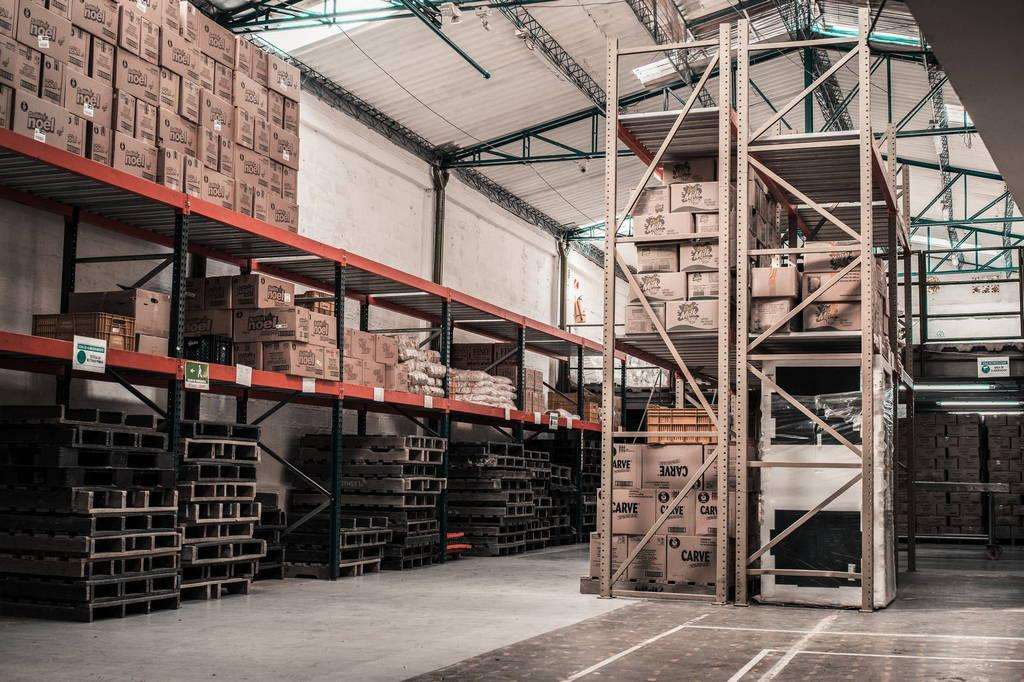Inventory management is one of the most important aspects of Amazon FBA selling. It’s critical to track inventory levels and maintain proper stock levels in order to avoid potential delays in shipping, stockouts that result in lost revenue, and issues with customers not being able to purchase products.
There are a number of different inventory management tactics that can improve your bottom line – but it is important to choose the strategies that fit your business the most (since each FBA store, product line and supply chain is unique).
In this article, we’ll cover the benefits and consequences of good & bad inventory management – along with the top 7 strategies to manage your products efficiently to reduce expenses and boost profitability.
Use this outline to skip to any section of this guide:
- Benefits of good inventory management
- Consequences of poor inventory management
- Keep an eye on your Inventory Turnover Rate
- Forecast seasonal fluctuations in demand
- Work with reliable suppliers and freight forwarders
- Optimize your supply chain
- Drip-feed Amazon your inventory from an FBA prep service
- Have an accurate tracking system in place
- Take advantage of payment terms to improve cash flow
- How to start managing inventory better
Benefits of good inventory management
A good inventory management system is crucial for any business… but it’s particularly important for businesses that rely on Amazon FBA. An effective inventory management system can help you to keep track of your stock levels, minimize waste, and maximize profits. It can also help you to avoid the costly mistake of over-ordering or under-ordering inventory.
This is an essential process for any business, but it can be a challenge – particularly for businesses that sell products online. An over-stocked warehouse can tie-up valuable capital in inventory that may not sell for months – while an under-stocked warehouse can cause customers to look elsewhere for the products they need.
A top-notch Amazon inventory management system can help to strike the right balance between maintaining adequate stock levels and avoiding excessive inventory costs. By tracking sales data and using analytics to predict future demand, you can avoid the costly mistake of either over-ordering or under-ordering inventory.
In addition, an efficient inventory system can help you to monitor trends and anticipate customer demand. By keeping tabs on industry swings, you can identify opportunities to release new products or services that will capture the attention of shoppers. Understanding what customers are searching for can help you stock your inventory with items that are likely to sell well.
And finally, monitoring customer reviews can give you insights into what shoppers are looking for in terms of quality and service. By being proactive in these areas, you can position your Amazon business for success. In today’s competitive marketplace, a professional stock management system is an essential tool for any business that relies on Amazon FBA – since it can make the difference between operating at a profit or a loss.
Consequences of poor inventory management
Of all the moving parts in an Amazon FBA business, most sellers agree inventory management is one of the most crucial aspects. Yet it’s also one of the most difficult – particularly if you don’t have a streamlined & optimized process in place. The consequences of poor inventory management can be severe, leading to lost sales, frustrated customers, and even suspended accounts.

One of the biggest problems with bad inventory management is that it can lead to stockouts. If you’re constantly running out of popular items, customers will look elsewhere for those products. Not only will you lose those sales, but you’ll also damage your reputation as a reliable seller. Worse yet, if you have too many slow-moving items taking up space in your warehouse, you’ll incur storage fees from Amazon. So it’s important to strike a balance between keeping enough inventory on hand to meet customer demand – without tying up too much cash in slow-moving product.
Another consequence of poor inventory management is that it can make it difficult to accurately track your profitability. If you don’t know how much inventory you have on hand… it’s hard to know how much each sale actually costs you. This makes it difficult to adjust your prices or make other changes that could improve your bottom line.
Monitor your Inventory Turnover Rate
Inventory turnover rate is a ratio that measures how many times a company’s inventory is sold and replaced over a period of time. It’s an important metric for managing inventory – as it can help to ensure that stock levels are sufficient and that items are selling at a healthy rate.
There are a number of factors that can affect inventory turnover rate, such as the type of products being sold, the seasonality of demand, and the company’s ordering and stocking procedures. By understanding these factors, businesses can work to optimize their inventory management and maximize profits.
As any business owner knows, purchasing inventory is a delicate balancing act. Order too little and you risk running out of stock, but order too much and you tie up valuable resources in excess inventory. By monitoring your turnover rate, you can get a better sense of how quickly your inventory is moving and adjust your ordering accordingly. Of course, there are other factors to consider as well… but paying attention to your turnover rate is a good way to ensure that you’re purchasing the right amount of inventory for your business.
Unfortunately, finding the perfect balance between ordering too much and too little inventory is often easier said than done. Businesses must constantly monitor sales levels and adjust their inventory accordingly. This can be a challenging task, but it’s essential for ensuring that the business runs smoothly and doesn’t incur unnecessary losses.
Amazon Selling Coach is a great way to keep track of your inventory and ensure that you have enough product to meet customer demand. The tool uses historic sales data to predict future demand, and it provides recommendations on how much stock to keep on hand. It also offers guidance on pricing and listing strategy, so you can optimize your listings for maximum visibility.
It’s a free service that is available to all sellers, and it’s an essential tool for any FBA seller who wants to be successful on the platform. If you are not already using Amazon Selling Coach, become familiar with it today – it can make the difference between having the right amount of inventory, or having too much or less than needed.

Forecast seasonal fluctuations in demand
As an Amazon seller, it’s important to be aware of the seasons and holidays and their impact on customer demand. While people are shopping for gifts and seasonal items, they’re also looking for items that can make their lives easier and more efficient. As a result, it’s important to stock your inventory with items that will meet this increased demand.
Seasonal items such as Christmas trees and holiday decorations should be ordered well in advance, so that you can have them available when customers are ready to buy. Aim to have a wide selection of items that takes advantage of the buying spree that occurs between Black Friday and Cyber Monday. By being prepared for the seasons and holidays, you’ll be able to better meet the needs of your customers and boost your sales – whether it’s end-of-year holidays, start of summer, or any of the other holidays and seasons.
There are a number of resources you can use to research these trends – including tools that track search volume data and product demand. You can also use this data to price your products competitively, ensuring that you remain profitable even during periods of high demand. By taking the time to prepare your inventory for seasons and holidays, you can ensure that your business is always ready to capitalize on high revenue opportunities.
However, keep in mind – most Amazon sellers rely on a small handful of suppliers to provide them with the products they need to keep their business running. While this arrangement can be beneficial in terms of cost and efficiency, it also creates a risk of disruptions in the event that one of these suppliers experiences a sudden increase in demand.
To avoid this potential problem, Amazon sellers should proactively communicate with their suppliers and warn them about any upcoming increases in demand. By doing so, they can ensure that their suppliers are able to keep up with the increased demand and avoid any delays in lead time or shipping. In the end, communication is the key to maintaining a smooth and efficient supply chain.
Work with reliable suppliers & freight forwarders
Any business that wants to be successful must have a well-oiled inventory management system – and one of the key components of an efficient system is working with reliable suppliers and freight forwarders.
Suppliers are the backbone of any business. Without them, there would be no product to sell and profits to be made. That’s why it’s so important to carefully vet and choose suppliers that are reliable and can provide high-quality products with fast lead times. Once you find dependable suppliers, it’s important to nurture those relationships, communicate frequently, and work together to ensure that your inventory levels are where they need to be.
In addition to having reliable suppliers, it’s crucial to work with a freight forwarder that you can trust. A freight forwarder will help you get your products from your supplier to USA warehouse centers quickly and without any hassle. They will also handle all of the customs paperwork for you so that you don’t have to worry about it. Combined with a trustworthy supplier, having dependable freight forward can take a huge amount of stress off your shoulders.

Optimize your supply chain
Any business that wants to be successful needs to have a well-run supply chain. There are a few ways to do this, but some of the most important things to consider are lead times, order sizes, and forecasting.
By reducing lead times, you can get products to customers more quickly. By increasing order sizes, you can reduce the per-unit cost of your products. And by forecasting demand, you can avoid stockouts and overages. These are the steps that can help you ensure your business is able to meet customer demand and manage your inventory in a much more efficient way.
Drip-feed your inventory from an FBA prep service
Instead of keeping your inventory at Amazon’s warehousing and incurring high FBA fees, use a prep service like ZonPrep – which can help you drip-feed your stock to Amazon. By releasing your inventory to Amazon on-demand at your control, you can better manage your stock levels and ensure that you never run out of items to sell. This method also helps you avoid the cost and hassle of storing excess inventory in Amazon warehouses – which are typically far more expensive than FBA prep services. So if you’re looking for a better way to manage your Amazon inventory, consider using a prep service to help you out.

Have an accurate tracking system in place
Having an accurate inventory tracking system is crucial to keeping track of what you have in stock, what needs to be reordered, and where items are located. Additionally, it helps you monitor Amazon’s inventory levels and ensure that you are never out of stock. Having an accurate inventory management system in place can save you time, money, and headaches in the long run.
There are a few key components of an effective stock tracking system:
- Have a clear understanding of your product turnover rate. This will help you to forecast future inventory needs and avoid stockouts.
- Set up a regular cycle count schedule. This will ensure that your inventory records are always up-to-date and accurate.
- Create alerts for low stock levels. This way, you can quickly reorder products before they run out.
By implementing these steps, you can take control of your Amazon inventory and ensure that your business runs smoothly.
Take advantage of payment terms to improve cash flow
One of the most underrated ways to get a better handle on your inventory is to use payment terms on inventory purchases. By using payment terms, you can better manage your cash flow and make sure that you’re not overpaying for inventory. Payment terms also help you ensure you have enough quantities in stock at all times – and when you’re able to purchase more inventory upfront, you’ll likely get a discount from the supplier. As a result, using payment terms can be a helpful tool for managing your Amazon inventory and boosting your profit margins.
How to start managing inventory better
The first place to begin managing your inventory better is the Seller Central dashboard – which can provide valuable insights for your inventory levels. By monitoring your dashboard and keeping tabs on FBA shipments regularly, you can get a better idea of how much stock you need to maintain and make adjustments accordingly. In addition, the dashboard can also help you keep track of your sales patterns and anticipate spikes in demand. Taking advantage of your Amazon Seller Central dashboard is an essential part of successful inventory management.

Final thoughts on inventory management for Amazon FBA sellers
As an Amazon FBA seller, it is critical to have a well-run and organized inventory system. Not only will this help you to keep track of your products, shipments and fees… but you’ll also be able to quickly and easily meet customer demand and maximize revenue. By taking the time to implement some of these basic inventory management tips above, you can save yourself a lot of time, headaches and disappointment down the road.
